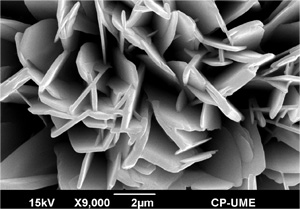
AquaPower has developed proprietary processes capable of nano-sizing most minerals and nutrients, both water and lipid soluble, in an aqueous formulation. Using our unique water based nano technology our customers create highly effective products, supplements and solutions in industrial, nutrition, and agricultural markets.
AquaPower is your partner for:
- Developing New Products
- Modifying and Nano Sizing Existing Products
- Nano Particulating Ingredients
- Creating Ionic Molecules
By reducing the size of a particle, the total surface area in a product is greatly increased. A larger particle surface area results in greater biochemical reactivity and thus a dramatic increase in efficacy. This means that a nutrient in an aqueous formulation becomes readily available for utilization by animals and humans at the cellular and subcellular level with previously unobtainable levels of efficacy.
The effects of a nanoparticle product include:
- Greatly Increased Efficacy
- Increased Cellular Hydration
- Immediate Absorption of Nutrients into Living Cells
Because AquaPower nano sizes materials material costs for finished products are often less than products created using conventional methods. AquaPower is often able to take a customer’s existing product and dramatically improve results while lowering costs.
AquaPower’s unique technology provides our clients with a key differentiator in the market place. Fertilizers can be made that significantly reduce runoff and environmental impact. Animal supplements can be designed to prevent disease and improve growth rates. Human products can be formulated to improve overall health and quality of life.
Contact us today to discover how AquaPower’s powerful technology can become your competitive advantage and help you create world class products.
Learn more about NanoTechnology
Why are nano particles so important?
A nanoparticle (or nanopowder or nanocluster or nanocrystal) is a small particle with at least one dimension less than 100 nm [1].
Surface area is the measure of how much exposed area an object has. It is expressed in square units. If an object has flat faces, its surface area can be calculated by adding together the areas of its faces. Even objects with smooth surfaces, such as spheres, can have well-defined surface area.
The ratio of surface area to volume of any material at the nanoscale (10-9) changes so dramatically (three orders of magnitude smaller than ‘micro’) that the implications for improved efficiency in nutrient delivery, uptake, and utilization are staggering. Bio-chemical reaction involving ‘soft’ nanoparticles occur so much more rapidly than at macroscale that no easily understood comparison is possible.
As a result of these factors, nutrient doses at the nanoscale can be dramatically reduced without any loss of effect. Nutrient effects previously demonstrable only in vitro become plausible in living organisms. For example, since the body deals with soft nanoparticles much differently than macro particles, bioavailablity can virtually disappear as a delivery problem. Nanoparticles are readily available for cellular uptake because they are similar in size to the materials cells already utilize. Remember that nanoparticles are, by definition, 100 nanometers or less in at least one dimension. This is the size of a virus. Imagine nutrients, the size of a virus, available for the cell to utilize without cumbersome modification.
A Sense of Scale
How large is a nanoparticle, exactly? Here are some examples for reference:
| 7,000 nm | diameter of a red blood cell |
| 6 nm | diameter of a typical virus |
| 5 nm | diameter of a hemoglobin molecule |
| 2 nm | diameter of DNA helix |
| 1 nm | diameter of glucose molecule |
You might also want to take a look at this interactive example to learn more about the size of nanoparticles and the scale of the universe.


